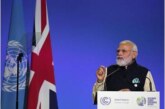Recent years have witnessed remarkable changes in the geopolitics of Asia-Pacific region where almost every country has established an elaborate web of diplomatic, security or economic partnerships with other countries. Similarly regional organizations have also seen proliferation from a few regional organizations with limited membership to a matrix that is much more elaborate with more member countries. There are about eight regional forums: ASEAN, ASEAN Plus Three, ASEM, ARF, APEC, EAS, Asia Cooperation Dialogue, and Bali Democracy Forum.
Interestingly, the global strategic and economic paradigm is shifting towards Asia-Pacific and the present century is rightly being termed as the Asia-Pacific century. The overall relationships among the major powers of the region can be said to be peaceful, stable and cooperative. The region, from New Delhi, to Jakarta, to Beijing and Seoul, is seemingly swayed by optimism and dynamism.
Inter-state relations are characterized by goodwill and cross border linkages between the people are witnessing increased interaction along with active globalism being increasingly embraced. However, geopolitical relationships in Asia-Pacific remain fluid. The transformation taking place in many countries is also impacting the inter-nation relationships. The geopolitical ramification of the political changes in the Arab Spring countries for the rest of Asia remains to be seen.
Concurrently, geopolitical fluidity of Asia-Pacific region also makes discernible some shortcomings and vulnerabilities. There is a dire need of matching up the overall security architecture of this region with the much more refined economic architecture along with the removal of some strategic distrusts that still persist. According to some experts, threats to geopolitical stability in the past emanated from military invasion and occupation, but presently most geopolitical risks spring up not so much from the threat of military attack, but from conditions of mistrust, miscalculation and miscommunication, thereby culminating in occasional eruption of incidents. The resultant outcome is escalation of disputes, border clashes, naval stand-offs, brinkmanship, and the likes.
 New opportunities of economic and military cooperation are opening up between the US and Vietnam as well as between Myanmar and its neighbours and Japan. Recently, Japan convened a summit in Tokyo with the five nations of the Mekong River to propose the Cooperative Strategies 2012. Tokyo has promised Myanmar to write off $3.7 billion worth of debt, as well as renew its provision of developmental assistance. Recent visit of Myanmar’s Opposition leader Aung Suu Kyi to the United States and India has been instrumental in eliciting new goodwil for Myanmar.
New opportunities of economic and military cooperation are opening up between the US and Vietnam as well as between Myanmar and its neighbours and Japan. Recently, Japan convened a summit in Tokyo with the five nations of the Mekong River to propose the Cooperative Strategies 2012. Tokyo has promised Myanmar to write off $3.7 billion worth of debt, as well as renew its provision of developmental assistance. Recent visit of Myanmar’s Opposition leader Aung Suu Kyi to the United States and India has been instrumental in eliciting new goodwil for Myanmar.
China’s rise to the second largest economy in the world has envisaged a paradigm shift in the geopolitics of Asia-Pacific. The recent crux is the United States’ international strategic “pivotal shift” under the Obama administration, which was intended to weaken the political conflict it had with the Islamic world during the “War on Terror” and to turn the main object of the “civilized conflict” to the Chinese civilization, which has the greatest economic competitiveness.
Besides, in East Asia the Chinese dominance is prominent as compared to the economic decline of Japan. In contrast is the rise of South Korea, which has begun to supersede Japan in the traditional manufacturing and electronics industries. On the international stage, not only has Korean culture created waves overseas, but the Korean UN secretary general and Korean head of the World Bank have also displayed disproportionate worldwide influences. In the Indian subcontinent, in contrast to the Indian economic achievements, Pakistan’s economy is at a standstill, while its politics continue to slow down and crumble.
As the emerging superpower in the region, China should show matured diplomacy matching its status and should not indulge in acts of arms twisting or harassment of neighbouring countries. The island disputes in East China Sea as well as in South China Sea should be resolved amicably and not by flexing muscles.
The 21st century affords us the opportunity to build a durable architecture for peace in this region. This architecture can be more durable, and more peaceful, than at any regional order in previous decades or centuries provided all member countries show willingness to do so. North Korea and Iran should contribute their share of establishing peace and stability in this part of the globe for the prosperity and well-being of their own people. The Big Powers should not resort to bullying tactics against Iran or North Korea rather means should be sought to bring them to the negotiating table. A stable, peaceful and prosperous Asia-Pacific region is in the interest of lasting international peace and stability.



